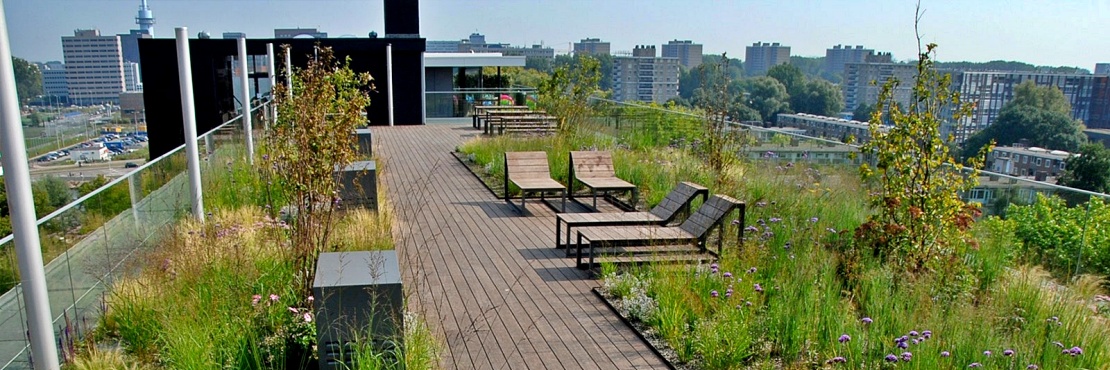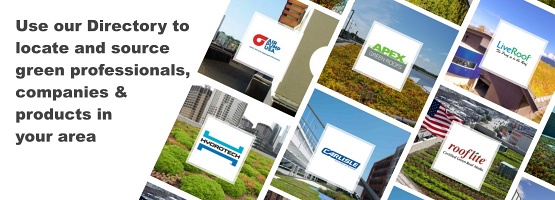Matt Simon of WIRED writes:
Green Roofs Are Great. Blue-Green Roofs Are Even Better. Amsterdam is experimenting with roofs that not only grow plants but capture water for a building’s residents. You might visit Amsterdam for its famous canals, and who could blame you, really. But the truly interesting waterways aren’t under your feet—they’re above your head.
Beautiful green roofs have popped up all over the world: specially selected plants growing on structures specially designed to manage the extra weight of biomass. Amsterdam has taken that one step further with blue-green roofs, specially designed to capture rainwater. One project, the Resilience Network of Smart Innovative Climate-Adaptive Rooftops, or RESILIO, has covered over 100,000 square feet of roofs in Amsterdam, including 86,000 square feet on social housing complexes. Citywide, the blue-green roof coverage is even bigger and growing, currently estimated at over 500,000 square feet.
The city of tomorrow, then, isn’t the concrete-smothered metropolis of science fiction, but an increasingly green and spongy landscape that can be squeezed in times of need.
Metropolises are increasingly adopting the “sponge city” concept, deploying more green spaces that soak up downpours that are getting heavier as the world warms. That simultaneously reduces flooding and recharges the underlying aquifers, which can then be tapped into in times of need. Whereas cities used to be designed to wick rainwater away as quickly as possible, increasingly they’re exploiting that resource instead of fighting it.
A major challenge with sponge cities, though, is that so much of an urban area is rooftops, which are obviously impervious by design. Green roofs might help soak up some rainwater to hydrate the plants up there, but blue-green roofs go a step further with additional infrastructure that gathers up the liquid, stores it, and dispenses it to the building’s residents for watering plants and flushing toilets.
The system works in layers. At the surface, you’ve got your plants: some combination of mosses, shrubs, grasses, ferns, herbs, or sedum, an extremely hardy genus that’s a staple of green roofs. (Though plants of course need sunlight to survive, up on a roof they’re bombarded with potentially too much light. It can also get very hot and very windy up there.) The plants are rooted in soil, providing nutrients and support.
Below that stretches a filter layer, which keeps the soil from getting into the next layer, a lightweight crate system that stores the water. And finally, below that you’ve got additional layers to keep water and plant roots from infiltrating the actual roof. “You have, in fact, a flat rain barrel on top of your roof,” says Kasper Spaan, policy developer for climate adaptation at Waternet, Amsterdam’s public water management organization, which is participating in RESILIO.
Read more: Green Roofs Are Great. Blue-Green Roofs Are Even Better
 Greenroofs.comConnecting the Planet + Living Architecture
Greenroofs.comConnecting the Planet + Living Architecture






